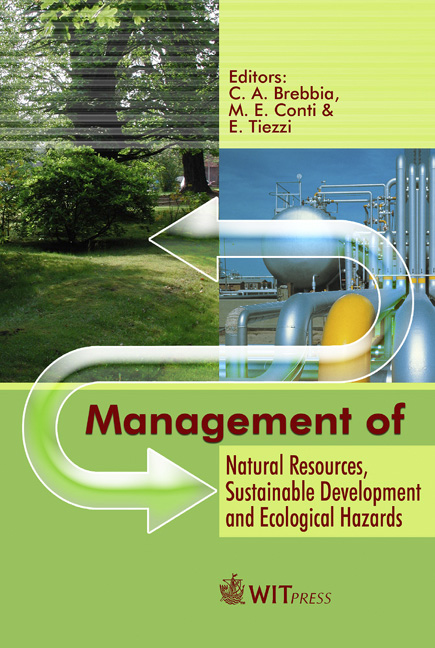Sensoristic Approach To Biological Damage And Risk Assessment
Price
Free (open access)
Transaction
Volume
99
Pages
10
Published
2006
Size
932 kb
Paper DOI
10.2495/RAV060271
Copyright
WIT Press
Author(s)
L. Campanella & C. Costanza
Abstract
A review is proposed of various types of sensoristic approaches to biological damage and risk assessment. The traditional approach to the toxicity evaluation of a matrix based on the determination of toxic concentration is replaced by a sensoristic one. Some sensors that are able to detect risky and dangerous situations and to evaluate them by screening and marker procedures are presented. The marker indexes we propose are total organic carbon, total radicalic concentration, integral toxicity and ecopermanence. Keywords: TOC analysis, ecopermanence, TiO2 photosensor, biosensor, integral toxicity assessment, human tissue biosensor. 1 Introduction There are a continuously increasing number of compounds, both newly discovered and already known, which are disposed of into the environment and then pass into the food chain. Very complicated controls and analysis are required to ascertain whether there are any risks to citizens and users. These analyses are generally very costly so they are not always completed – and if they are completed, it may not be as frequently as is necessary – and they are not permitted everywhere. It is also to be observed that sometimes the obtained results show that the fear of pollution of the considered matrix is disproportionate, as the pollution level is insignificant and below dangerous levels, so that analysis could have been avoided, but obviously this cannot be foreseen. So a new approach must be more opportunely adopted: the approach of the "crossing light", preliminary screening and markers. The first step of this
Keywords
TOC analysis, ecopermanence, TiO2 photosensor, biosensor, integral toxicity assessment, human tissue biosensor.





